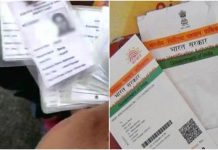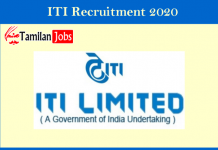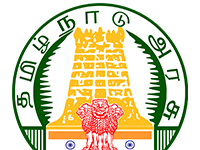
5 Ways You Can Reduce Your Income Tax Liability
Income Tax Act, enable provisions for assessees to minimise their liability. 5 Ways You Can Reduce Your Income Tax Liability. August 31st is the last date for assessees to file their income tax return for assessment year 2018-19 (financial year 2017-18). According to income tax laws, the concerned year is the period starting from April 1 and ending on March 31 of the next calendar year. The year in which income is earned is called previous year, whereas the year in which tax is charged on the income is called assessment year, according to Income Tax Department. That means income earned during the period from April 1, 2018 to March 31, 2019 will be taxed the next year.
Now, out of income tax laws, experts point out some important sections that can be used by the common man while planning their taxes for a year.
Section 80C
Section 80C of the Income Tax Act provides for income tax deductions up to Rs. 1.5 lakh in a financial year. This benefit can be availed by investments in a variety of tax-planning instruments, including life insurance premium. Life insurance premium paid to continue a life insurance policy of self, spouse or any child is eligible for deduction under certain conditions. In case of an HUF or Hindu Undivided Family, the premium paid on the life insurance policy of any of the members (other than a contract for a deferred annuity) is eligible for deduction under the same conditions.
Over and above of the Rs. 1.50 lakh deduction allowed under section 80C of the Income Tax Act, 1961, one can claim an extra exemption of Rs. 50,000 by making investments in the National Pension System (NPS). An assessee can claim exemption up to Rs. 2 lakh on the total taxable income by investing in NPS.
“Many taxpayers fail to avail of the full benefit of Section 80C due to incomplete information about the provision. Even if a taxpayer could not make investment in allowed avenues in his own name, he can claim the deduction for the investments made in the name of his family members,” Naveen Wadhwa, DGM, Taxmann, told NDTV.
Deduction for contribution in name of spouse or children: This includes contribution in a life insurance policy in the form of premium, in PPF (Public Provident Fund), in ULIP (Unit-Linked Insurance Policy), deferred annuity and annuity plan, explains Mr Wadhwa.
Deduction for contribution in name of girl child: Contribution made by an individual in to the Sukanya Samriddhi Account of any of his or her two girl children qualifies for deduction under Section 80C.
Besides, tuition fee of children and payment by an individual for the tuition fee for any of his or her two children qualifies for deduction, say experts.
“There are certain expenses which are eligible for section 80C deductions but a taxpayer does not know much of these expenses,” Mr Wadhwa of Taxmann adds. These are stamp duty and registration fee paid at the time of purchase of house property, repayment of housing loan by the taxpayer, contribution in EPF/PPF and fixed deposits with banks or post offices for five or more years.
Here are few other sections of the I-T law that can be used by an individual to claim further reduction in tax liability
| SECTION OF I-T ACT | NATURE OF PAYMENT | QUANTUM OF DEDUCTION |
|---|---|---|
| 80D | Payment of medical insurance premium | Lower of following: |
| a) Actual payment; or | ||
| b) 50,000 to 1,00,000 (higher deduction in case of senior citizen) | ||
| 80DD | Medical treatment of disabled person | 75,000 (1,25,000 in case of severe disability) |
| 80DDB | Deduction for medical treatment | Lower of following: |
| a) Actual payment; or | ||
| b) 40,000 (1,00,000 in case of senior citizen) | ||
| 80E | Payment of interest on education loan | Actual interest paid |
| 80EE | Payment of interest on house loan | Lower of following: |
| a) Actual payment; or | ||
| b) 50,000 | ||
| 80GG | Payment of rent | Lower of the following: |
| a) Excess of rent paid over 10% of Adjusted Total Income; or | ||
| b) 25% of Adjusted Total Income; or | ||
| c) Rs. 5,000 per month | ||
| 80U | Allowance for Disability | 75,000 (1,25,000 in case of severe disability) |
| (Source: Taxmann) | ||
| SECTION | NATURE OF RECEIPT | QUANTUM OF DEDUCTION |
|---|---|---|
| 80TTA | Savings account interest | Lower of following: |
| a) Actual Income; or | ||
| b) 10,000 | ||
| 80TTB | Interest on deposits of senior citizens | Lower of following: |
| a) Actual Income; or | ||
| b) 50,000 | ||
| (Source: Taxmann) | ||
These are some others deductions available under the income tax laws that provide for reduction in the tax outgo of the assessee.
| TAXABLE INCOME | TAX RATE | ||
|---|---|---|---|
| General public | Senior citizen (60-80 years) |
Super senior citizen (80 years and above) |
|
| Up to Rs. 2,50,000 | Up to Rs. 3,00,000 | Up to Rs. 5,00,000 | Nil |
| Rs. 2,50,000 to Rs. 5,00,000 | Rs. 3,00,000 – Rs. 5,00,000 | – | 5% |
| Rs. 5,00,000 to Rs. 10,00,000 | Rs. 5,00,000 – Rs. 10,00,000 | Rs. 5,00,000 – Rs. 10,00,000 | 20% |
| Above Rs. 10,00,000 | Above Rs. 10,00,000 | Above Rs. 10,00,000 | 30% |
The taxman has defined three income tax slabs based on which taxable income – income liable for tax in a year – attracts tax.






























